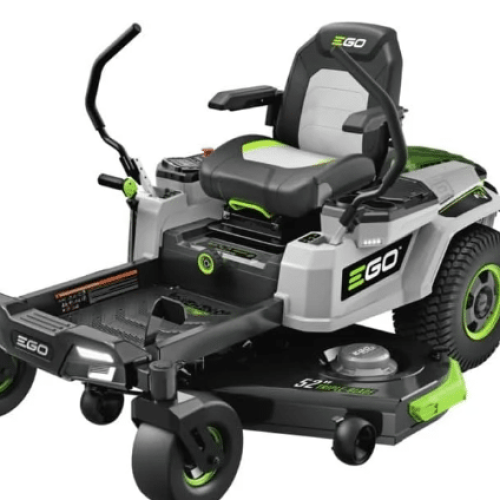Hey y’all it’s JV Charles .I love growing things in my garden, and beet microgreens are a favorite. They’re small but packed with nutrients. They add a burst of flavor and health benefits to my meals. Growing them at home is easy and very rewarding.
This article will show you how to grow your own beet microgreens. We’ll cover choosing the right types, harvesting, and storing them. With our help, you can enjoy the taste and health benefits of homegrown beet microgreens.
Key Takeaways
- Beet microgreens are a vibrant and nutrient-packed superfood that can be easily grown at home.
- They provide a good source of vitamins A, B, C, E, and K, as well as iron, calcium, and protein.
- Beet microgreens typically take two to three weeks to mature, offering a colorful harvest with hot pink stems.
- There are many unique beet varieties to choose from, including Chioggia, Touchstone Gold, and Bull’s Blood.
- Growing beet microgreens under grow lights allows for better control over their growth and development.
Understanding Beet Microgreens: A Vibrant Superfood
Beet microgreens are young, packed with nutrients. They are the early stages of the beet plant. These tiny greens are full of vitamins, minerals, and antioxidants. They have up to 40 times more nutrients than mature beets, making them a superfood.
What are Beet Microgreens?
Beet microgreens are the tender shoots that grow from beet seeds. They are harvested when they are young, about 10-14 days after germination. Unlike beet sprouts, microgreens include the leaves and first true leaves, not just the sprout.
Nutritional Benefits of Beet Microgreens
Beet microgreens are full of vitamins A, B, C, E, and K. They also have iron, calcium, magnesium, and potassium. Plus, they are loaded with antioxidants like betalains, which are good for you.
Studies show that beet microgreens have more nutrients than mature beets. After just 15 days, they can have up to 40 times more vitamins and antioxidants. Totally cool huh?
Eating beet microgreens can help prevent heart disease, Alzheimer’s, and diabetes. They also support gut health by providing nutrients for good gut bacteria.
“Microgreens, in general, are about five times higher in vitamins and carotenoids than their mature vegetable counterparts.” – USDA Research
Beet microgreens are a superfood because of their nutritional value and health benefits. Adding them to your diet is a tasty way to improve your health.
Choosing the Right Beet Varieties for Microgreens
Choosing the right beet varieties is key to growing tasty beet microgreens at home. Different beets have unique colors, flavors, and growth habits. This affects the quality and look of your microgreens. Let’s look at some popular beet types perfect for microgreens.
The Chioggia Beet stands out with its candy-striped look. It tastes sweet and earthy, perfect for salads and garnishes. Another great choice is the Touchstone Gold Beet, which has a golden color and a mild, nutty flavor.
If you want a deeper color, try the Bull’s Blood Beet. Its leaves and stems are a deep purple-red, making a beautiful microgreen. The Detroit Dark Red Beet is another classic, offering a strong, slightly sweet taste.
- Early Wonder Beet: A vibrant, red-stemmed variety with a sweet, earthy taste.
- Gourmet Blend Beet: A mix of beet varieties, offering a diverse range of colors and flavors.
- Chioggia Beet: Known for its striking candy-striped appearance and sweet, earthy flavor.
- Touchstone Gold Beet: A golden-hued beet with a mild, almost nutty taste.
- Bull’s Blood Beet: Boasts a deep purple-red color and a robust, slightly sweet flavor.
- Detroit Dark Red Beet: A classic variety with a rich, deep red color and a sweet, earthy taste.
When picking beet varieties for microgreens, think about color, taste, and growth habits. Trying different types can make your microgreen dishes more interesting. It adds variety in both looks and flavors. Check out this beautiful picture!!
“Beet microgreens are a true delight, offering a burst of flavor and vibrant color to any dish. Choosing the right beet varieties can truly elevate your microgreen experience.”
Growing beet microgreens is all about exploring their many options. By picking varieties you like, you can make a microgreen garden that’s both beautiful and tasty. This adds a special touch to your meals.
beet microgreens: A Step-by-Step Guide
Growing beet microgreens at home is easy and rewarding. With basic supplies and simple steps, you can enjoy fresh, nutritious greens. Let’s explore how to grow these vibrant, superfood greens.
Supplies Needed
To start growing beet microgreens, you’ll need a few things:
- A growing tray or container (like a 10″ x 20″ seed starting tray)
- Seed-starting mix or potting soil
- Beet microgreen seeds, such as the popular Bull’s Blood variety
- A misting bottle or spray for watering
- Grow lights or a sunny window (at least 12 hours of light daily)
Planting and Germination
Start by filling your tray with seed-starting mix or potting soil and moistening it. Spread the beet microgreen seeds evenly, about 9-10 per square inch. Then, cover the tray to keep it dark for 3-5 days to help the seeds germinate.
Lighting and Watering
Once the seeds have germinated, remove the cover. Provide at least 12 hours of light daily, either from a sunny window or grow lights . Keep the soil moist but not too wet by watering from the bottom. Make sure not to get the leaves wet to prevent fungal problems. Better safe than sorry!!
Beet microgreens are ready to harvest in 12 to 15 days. They offer vibrant colors, a sweet-earthy taste, and are packed with vitamins A, B, C, E, and K, plus minerals like calcium, iron, and zinc.
“Beet microgreens feature a dark green leaf and burgundy red stems, making them visually attractive to food enthusiasts and chefs.”
With the right supplies, steps, and care, you can grow a successful crop of beet microgreens at home. Enjoy the satisfaction of growing and eating this superfood!
Harvesting and Storing Your Beet Microgreen Harvest
Growing your own beet microgreens at home is rewarding. But, it’s not just about planting and growing. You need to know how to harvest and store them right to keep them fresh and full of nutrients.
Harvesting Beet Microgreens
Beet microgreens are ready to pick when the leaves open and the stems are 1-3 inches tall. This usually takes 10-20 days after planting. Use scissors or a knife to cut the microgreens just above the soil, leaving a bit of stem with the leaves.
Storing Beet Microgreens
Keep your harvested beet microgreens fresh by storing them in an airtight container in the fridge. This keeps their color bright, texture crisp, and nutrients strong for up to a week. Don’t wash them before storing to avoid moisture, which can shorten their life.
Here are tips to keep your beet microgreens fresh longer:
- Handle the microgreens gently to prevent damage and spoilage.
- Make sure the container has good air flow to prevent moisture buildup.
- Store them in a single layer to avoid crushing or wilting.
- Keep them away from direct sunlight or heat to maintain quality.
By following these simple steps for harvesting and storing, you can enjoy your homegrown beet microgreens for a long time. They’ll stay vibrant, tasty, and packed with nutrients. Growing your own superfood at home is truly rewarding!
Conclusion
Growing your own beet microgreens at home is rewarding and easy. It lets us enjoy a constant supply of this vibrant, nutrient-dense superfood. By following the steps in this guide, we can easily cultivate beet microgreens. They add flavor, texture, and nutrition to our meals.
We’ve learned that beet microgreens grow quickly from sowing to harvesting. They are a fast-growing food source. Proper lighting and seed spacing are key for the best yields and health benefits of this culinary powerhouse.
So, let’s enjoy the joy of growing our own beet microgreens. They are a great choice for home gardeners. They boost the nutritional value of our meals and bring satisfaction from growing our own food.
FAQ
What are beet microgreens?
Beet microgreens are young, nutrient-rich seedlings of the beet plant. They have a deep-red or burgundy color. Their stems and leaves are delicate and vibrant.
What are the health benefits of beet microgreens?
Beet microgreens are full of vitamins and minerals like Vitamins A, B, C, E, and K. They also have iron, calcium, magnesium, potassium, and antioxidants. They have up to 40 times more nutrients than mature beets, making them a superfood.
What beet varieties are best for growing microgreens?
Top beet microgreen varieties include Early Wonder Beet, Chioggia Beet, and Touchstone Gold Beet. Other good ones are Gourmet Blend Beet, Bull’s Blood Beet, and Detroit Dark Red Beet. Choose based on color, taste, and growth.
What supplies do I need to grow beet microgreens at home?
You need a growing tray, seed-starting mix, beet seeds, and grow lights to grow beet microgreens at home.
How do I plant and germinate beet microgreens?
Start by filling the tray with moist soil and spreading the beet seeds evenly. Cover it with another tray or a weighted lid for germination. This blackout period lasts 3-5 days.
How do I care for beet microgreens during the growing process?
After seedlings appear, remove the cover. Provide them with 12 hours of light daily, from a sunny window or grow lights. Water them by watering from the bottom to keep the soil moist but not too wet.
When and how do I harvest beet microgreens?
Harvest beet microgreens when the leaves open and stems are 1-3 inches tall, in 10-20 days. Cut them just above the soil line with scissors or a knife.
How do I store harvested beet microgreens?
Store beet microgreens in an airtight container in the fridge for up to a week. Don’t wash them before storing to keep them fresh. Wash them just before using to avoid moisture issues.
Source Links
- https://www.epicgardening.com/beet-microgreens/ – How To Grow Beet Microgreens in 6 Easy Steps
- https://www.italiansprout.com/en/blogs/mangiare-sano/come-coltivare-microgreen-bieta-in-casa – How to Grow Beet Microgreens At Home
- https://sowrightseeds.com/blogs/planters-library/beet-microgreen-how-to-grow-benefits – Beet Microgreens: A Deliciously Different Superfood
- https://extension.psu.edu/the-abcs-of-microgreens – The ABCs of Microgreens
- https://www.signos.com/blog/benefits-of-microgreens – The Benefits of Microgreens and Their Uses: A Full Guide | Signos
- https://microgreensworld.com/nine-most-nutritious-microgreens-to-grow/ – The 9 Most Nutritious Microgreens You Can Grow at Home
- https://grocycle.com/types-of-microgreens/ – Complete List of Main Types of Microgreens You Can Grow | GroCycle
- https://microgreensworld.com/most-profitable-microgreens-to-grow-and-sell/ – Choosing Your Microgreens Varieties for Maximum Profitability (Episode 9)
- https://survivalgardenseeds.com/products/beet-microgreens-seeds – Beet Microgreens Seeds
- https://homemicrogreens.com/growing-beet-microgreens/ – Growing Beet Microgreens – Bull’s Blood Beets – Home Microgreens
- https://www.bootstrapfarmer.com/blogs/microgreens/the-ultimate-microgreen-cheat-sheet – Ultimate Microgreen Cheat Sheet | Learn How to Grow Microgreens – Bootstrap Farmer
- https://practicalgrowing.com/microgreens/how-to-grow-beets/ – How to Grow Beet Microgreens from home | Practical Growing
- https://homemicrogreens.com/how-to-store-microgreens/ – How to Store Microgreens to Maximize Shelf Life – Home Microgreens
- https://sprouting.com/product/beet-pink/ – Beet, Pink – Mumm’s Sprouting Seeds
- https://microgreensworld.com/beet-microgreens-nutrition/ – Discover the Nutritional Wonders of Beet Microgreens
- https://www.ncbi.nlm.nih.gov/pmc/articles/PMC9864543/ – Microgreens—A Comprehensive Review of Bioactive Molecules and Health Benefits
- https://www.gardenoflight.net/2023/10/15/how-to-grow-beet-microgreens/ – how-to-grow-beet-microgreens
- https://www.mdpi.com/2311-7524/9/4/493 – The Effect of Light Intensity and Photoperiod on the Yield and Antioxidant Activity of Beet Microgreens Produced in an Indoor System






